Content Characteristics and Influencing Factors of Soil Selenium in Western Muchuan County, Sichuan Province
-
摘要: 硒是人体和动物必需的微量有益元素,摄入适量硒是提高人群生活质量的重要标志。食用富硒农产品是缺硒地区人体获取和补充硒元素的重要途径。调查土壤硒的含量特征、圈定富硒土壤资源分布区、查明土壤硒迁移富集的影响因素,是高效利用富硒土壤资源和科学开发富硒农产品的重要依据。本文选择四川省沐川县西部地区采集土壤样品,采用原子荧光光谱法、X射线荧光光谱法、电感耦合等离子体质谱/发射光谱法等方法测定土壤中Se、Al2O3、TFe2O3、OrgC、Cd等元素含量和pH值,利用统计学及相关分析等方法研究了土壤硒等元素含量和分布特征,并对土壤硒含量的主要影响因素进行探讨。结果表明:①研究区表层土壤硒含量范围为0.08~1.30mg/kg,平均含量为0.39±0.15mg/kg,满足富硒土壤条件的土壤面积为112km2,占研究区总面积的52%,其中无公害富硒土壤面积为35km2。土壤Cd含量是造成富硒土壤和无公害富硒土壤面积具有较大差异性的主要因素。②地质背景与土壤硒含量密切相关,富硒土壤主要受含碳酸盐岩及夹碳质地层的砂岩、粉砂岩等地层控制,土壤硒来源稳定;③土壤硒含量随pH值、风化程度的降低而升高,随有机质、TFe2O3、S含量的升高而升高,其中有机质对土壤硒的影响显著大于TFe2O3,表明该区域铁氧化物对硒的吸附能力低于有机质。综上所述,研究区富硒土壤资源丰富,建议当地充分利用相关资源开发富硒农产品,同时应注重有机肥的平衡施肥,并进一步加强土壤-作物系统中硒迁移富集影响因素的协同分析。要点
(1) 研究区富硒土壤面积为112km2,其中无公害富硒土壤面积为35km2,富硒土壤资源丰富。
(2) 地质背景与土壤硒含量密切相关,富硒土壤主要受含碳酸盐岩及夹碳质地层的砂岩、粉砂岩等地层控制。
(3) 土壤pH、有机质、TFe2O3、S及土壤风化程度均对土壤硒的富集活化产生影响,其中铁氧化物对硒的吸附能力低于有机质。
HIGHLIGHTS(1) The selenium-rich land covers 112km2, including 35km2 nuisanceless selenium-rich land. The selenium-rich land resources are abundant in the study area.
(2) The geological background is closely related to the soil selenium contents, which is mainly controlled by carbonate rocks, sandstone and siltstone intercalated with carbonaceous strata.
(3) Soil pH, organic matter, TFe2O3, S and weathering degree are important factors affecting the enrichment and activation of soil selenium. The effect of organic matter on soil selenium is significantly greater than TFe2O3.
Abstract:BACKGROUNDSelenium (Se) is an essential beneficial trace element for human and animals; taking an appropriate amount of selenium is an important sign to improve the quality of life. Eating selenium-rich agricultural products is an important way for humans to obtain and supplement selenium in low-Se regions. Investigating the content characteristics of soil selenium, delineating the distribution of selenium-enriched soil resources and identifying the influencing factors of soil selenium migration and enrichment can provide a sound basis for the efficient utilization of selenium-enriched soil resources and scientific development of selenium-enriched agricultural products.OBJECTIVESTo reveal the content, distribution characteristics and influencing factors of selenium in soils from the study area.METHODSSoil samples were collected from the western area of Muchuan County, Sichuan Province. AFS, ICP-MS and XRF were used to determine the elemental content (Se, Al2O3, TFe2O3, OrgC, Cd) and pH values. The content, distribution and influencing factors of soil selenium in the study area were evaluated using statistical and correlation analysis.RESULTSThe results showed that: (1) The content of selenium in the study area ranged from 0.08 to 1.30mg/kg, with an average value of 0.39±0.15mg/kg. The selenium-rich land was 112km2, accounting for 52% of the total area, of which the nuisanceless selenium-rich land was 35km2. Soil Cd content was the main factor causing the great difference between selenium-enrich soil and nuisanceless selenium-rich soil. (2) The geological background was closely related to the soil selenium content, which was mainly controlled by carbonate rocks, sandstone and siltstone intercalated with carbonaceous strata. The source of soil selenium was stable. (3) The soil selenium content decreased with pH and ba value, meanwhile, they increased with TFe2O3 and S content. The effect of organic matter on soil selenium was significantly greater than TFe2O3, indicating that the adsorption capacity of TFe2O3 for selenium in this area was lower than organic matter.CONCLUSIONSSelenium-enriched land resources are abundant in the study area. The content of soil selenium is affected by geological background and physical and chemical properties. It is suggested that local governments make full use of relevant resources to develop selenium-enriched agricultural products. At the same time, attention should be paid to the balanced fertilization of organic fertilizers. The collaborative analysis of factors affecting the migration and enrichment of selenium in the soil-crop system should be further strengthened.
-
土地质量调查中测定土壤中的有效磷含量能够准确了解当前土壤供磷状况,对指导改良土壤、农业生产、国土生态环境修复等具有重要意义[1-3]。研究者普遍认为土壤中磷的存在形式复杂,不同溶解度差异较大,此外有效磷又是植物生长所必需的关键养分之一,但由于在土壤中的存在形式复杂,使其成为最难被准确提取的养分之一[4]。1894年Dyer[5]首次用2%乙酸从土壤中提取植物中可利用磷。此后,基于土壤磷分布的多样性,研究者开发了多种提取方法,例如Olsen 等[6]用碳酸氢钠弱碱性溶液浸提土壤中的有效磷,在中性和碱性土壤中效果良好。但随着研究深入,协调不同土壤元素的形态、有效态的测试分析越来越受到研究人员的重视,以便更好地指导农业施肥、科学研究和控制环境污染[7-8]。通过持续改进用氟化铵-盐酸溶液浸提酸性土壤中有效磷的方法[9],以及Turner等[10]评估了多种浸提剂在提取土壤有机磷(SOP)的效率,发现不同浸提剂对无机磷和有机磷的提取效率存在显著差异,而且有机质含量高与无机磷含量高的土壤对浸提剂的响应不同。这些分析方法的改进促进了在研究溶解不溶性钙磷酸盐(Ca-P)化合物浸提剂方面的发展。
上述前人研究表明,土壤中磷的复杂形态及其在土壤中的吸附、固定和释放过程,使得有效磷的准确测定面临着难点和挑战,有必要对现有方法进行改进,开发一些更具广泛适用性的浸提剂用于测定土壤中的有效磷和其他有益元素。在方法研究方面,林业标准《森林土壤磷的测定》(LY/T 1232—2015)增加了用电感耦合等离子体发射光谱法(ICP-OES)测定森林土壤有效磷的方法[11-13],不仅能克服腐植酸颜色带来的影响,而且该技术的应用逐渐展示了更高的测量精度和稳定性,但目前对土壤样品的前处理和分析条件仍有待优化。离子液体作为一种新型浸提剂,在测定土壤中有效磷方面具有一定的潜力,但缺少系统的实验研究,目前离子液体的设计和选择可以针对土壤样品的一些特性和磷的形态进行调整,以提高选择性和提取效率,但应用于实际分析还需进行大量试验[14]。氢氧化钠溶液能够有效地溶解酸性土壤中的铁磷酸盐,而柠檬酸钠、连二硫酸钠和氢氧化钠组合的浸提剂则更适合提取闭蓄态磷[15-16]。对于石灰性土壤中不同形态的钙磷酸盐(Ca-P),蒋柏藩等[17]按照溶解度和有效性又分为三级,即用0.25mol/L碳酸氢钠提取磷酸二钙型(Ca2-P),用1mol/L乙酸铵提取磷酸八钙型(Ca8-P),用0.5mol/L硫酸提取磷石灰型(Ca10-P),此外用0.1mol/L氢氧化钠-碳酸钠溶液提取了铁磷酸盐(Fe-P)。十六烷基三甲基铵溶液是一种阳离子表面活性剂,其良好的溶解度和表面活性使之在污水处理、药物传递和纳米材料制备等领域具有重要应用,而应用于提取土壤中的有益元素亟待开展研究。
本文将氢氧化钠(NaOH)和十六烷基三甲基铵(CTA)作为一种碱系离子液体混合浸提剂,研究该浸提剂提取土壤中有效磷的分析方法。结合ICP-OES精密度高、检出限低、线性动态范围宽、干扰小等优点[18],对测定碱性土壤有效磷的不同实验条件如分析谱线、水土比、盐酸溶液酸化和滤液静置时间等因素进行实验[19],探索复合碱系离子液体浸提碱性土壤中的有效磷,从而建立一种适合碱性土壤中有效磷的分析方法。
1. 实验部分
1.1 仪器和主要试剂
电感耦合等离子体发射光谱仪(iCAP6300,美国ThermoFisher公司)。仪器主要工作条件为:射频发生器总功率1150W,振荡频率27.12MHz,辅助气(Ar)流速0.5~1.0L/min,积分时间8s,观测高度15mm。
智能恒温培养振荡器(UP-211C,速率150~180r/min,上海优普实业有限公司);雷磁酸度计(PHS-3C,上海仪电科学仪器股份有限公司);电子天平(0.0001g)。
磷标准溶液:称取105℃烘干2h的磷酸二氢钾(优级纯) 0.4394g,用高纯水溶解后,定容至1L,摇匀。即为磷标准溶液(100mg/L)。
十六烷基三甲基铵(CTA)溶液:称取182.225g CTA(优级纯),加入适量的去离子水,充分溶解,将溶解后的十六烷基三甲基铵溶液转移至1L容量瓶中,并用去离子水加至刻度线,摇匀混合,储存于聚乙烯瓶中备用。
氢氧化钠溶液(0.5mol/L):称取约20.0g氢氧化钠(优级纯)固体,用高纯水溶解后,定容至1L,摇匀。
盐酸溶液(1.0mol/L):量取82.0mL浓盐酸(优级纯),用高纯水稀释后,定容至1L,摇匀。
1.2 样品和实验方法
实验样品选择中国主要土壤类型的代表性区域的耕作层土壤:河北潮土(NSA-2)、陕西黄绵土(NSA-3)、四川紫色土(NSA-4),以及国家农业土壤一级标准物质:陕西渭南塿土(GBW07493)、陕西洛川黑垆土(GBW07494)、宁夏吴忠灌於土(GBW07495)、甘肃武威灌漠土(GBW07496)、青海互助栗钙土(GBW07497)、新疆阿克苏棕漠土(GBW07498)。样品的pH值和有机质含量基本属性见表1。
表 1 样品基本属性Table 1. Basic properties of the samples标准物质编号 有效磷含量推荐值
(mg/kg)pH
(25℃)有机质含量
(%)标准物质编号 有效磷含量推荐值
(mg/kg)pH
(25℃)有机质含量
(%)NSA-2 36±6 8.0 1.68 GBW07494 21±2 8.3 9.90 NSA-3 13±3 8.3 1.19 GBW07495 98±6 8.3 12.5 NSA-4 14.5±2.6 7.5 1.13 GBW07496 44±6 8.5 17.1 NSA-5 4±1 5.9 3.76 GBW07497 49±7 8.3 26.1 GBW07493 32±3 8.4 15.6 GBW07498 44±5 8.6 9.40 准确称取2.5g(精确至0.0001g)通过2mm孔筛的风干碱性土壤样置于塑料浸提瓶中,加入0.5mol/L 氢氧化钠−0.5mol/L十六烷基三甲基铵混合浸提剂50.00mL,在恒温(25±1℃)往复式振荡器中振荡30min(时间需严格控制)。用无磷中速滤纸干过滤到10mL比色管中,取上清液5mL加入5mL 1.0mol/L盐酸酸化,静置待测。同时按照上述步骤制备全程序空白样品。
将制备好的试样溶液用ICP-OES测定有效磷含量,采用标准曲线法定量。在仪器软件中输入土壤称样量和定容体积、稀释倍数等参数,通过测定试样中磷元素的发射强度,由标准曲线直接计算出土壤有效磷的含量。有效磷含量以干基表示,需要校正含水率,校正公式见式(1):
$$ \mathit{w} _{ \mathrm{P}} \mathrm= \mathit{X} \mathrm{/} \mathit{k} $$ (1) 式中:wP—有效磷含量(mg/kg);X—仪器测量信号所转换成相应的磷含量(mg/kg);k—由风干土壤换算成烘干土样的水分换算系数。
2. 结果与讨论
2.1 校准曲线和背景扣除
ICP-OES测定有效磷时,背景扣除是非常重要的步骤,它可以消除背景信号对测量结果的干扰,提高准确性。对于不同的样品类型和测量条件,背景扣除的参数需要进行优化。这包括空白校正中的空白样品选择、背景区域的选择、背景扣除算法的参数设置等[20]。而且在此之前,需要确保背景信号相对稳定,通过连续测量空白样品或参考样品来监测背景信号的变化情况,以确保背景扣除的准确性,可以选择与待测元素具有相似化学性质的材料作为参考材料。此外,适当的分析谱线能够有效地避免谱线造成的重叠干扰,而通过背景校正减小背景干扰也是提高测量精度的有效方式。如果不进行背景校正,则在每个峰值中心位置确定的原强度被用于计算浓度,较高的峰值比未受影响的峰值获得较高的分析结果。在选择背景位置时,应遵循的原则[21]是:将背景位置定在尽可能平坦、无小峰且离谱峰足够远的地方,此外,左、右背景强度的平均值尽可能与谱峰背景强度一致。
实际分析测试中背景校正如图1所示,有效磷测试时参考校准曲线扣除背景时测量结果的原始积分曲线(该数据来源于仪器iCAP6300电感耦合等离子体发射光谱仪,实验条件为:射频发生器总功率1150W,振荡频率27.12MHz,雾化器气体压力145kPa,辅助气(Ar)流速0.5L/min,冷却气(Ar)流速1.4L/min,蠕动泵转速100r/min,积分时间8s,观测高度15mm,环境温度24.6℃,湿度37%),图中的曲线表示了不同浓度含量的P谱峰曲线,在P 213.618nm和P 214.914nm波长下,有效磷测定的谱图峰型良好,并且积分和背景扣除合理。参考图1的背景校正结果,可以进一步优化测定碱性土壤有效磷的背景扣除方法,从而提升测量的准确性和可靠性。
2.2 磷分析谱线的选择
测定有效磷含量时,选择合适的分析谱线是至关重要的,因为它直接影响到测定结果的准确性和可靠性。ICP-OES分析中,磷有177.495nm、178.211nm、213.618nm、214.914nm四个波长谱线,均处于真空紫外区。虽然P 177.495nm、P 178.211nm谱线灵敏度高,但是很容易受到空气介质对谱线的吸收影响,其抗干扰能力差。马兴娟等[22]在测定石灰性土壤中有效磷含量时,选定波长P 213.618nm取得良好的效果。而另外有研究表明213.618nm和214.914nm是测定磷元素的主要参考谱线[23],考虑到使用的光谱仪的分辨率和灵敏度等特性,本研究选择P 213.618nm和P 214.914nm作为磷元素的分析线波长。
将含量0.00、2.00、5.00、10.00、20.00、50.00的磷标准系列溶液,按照ICP-OES设定的条件进行测定。以磷浓度为横坐标,发射强度为纵坐标绘制校准曲线,结果表明:磷的质量浓度在50.00mg/kg以内与发射强度呈线性关系。对12份空白溶液进行测定,以其测定值标准偏差的3倍对应样品的质量分数作为方法检出限。线性回归方程:Y1=207.98X1−29.32(P 213.618nm);Y2=128.78X2−23.95(P 214.914nm),两个波长的待测磷元素工作曲线线性较好,其相关系数在0.999852~0.999861,方法检出限分别为0.054mg/kg和0.066mg/kg。选择P 213.618nm谱线,检出限更低,可以满足碱性土壤样品中有效磷测试需求。
选择不同的磷谱线测定有效磷,其3次测定结果平均值见表2。可知NSA系列和GBW07493、GBW07494、GBW07496~GBW07498土壤标准物质波长P 213.618nm对应的测定结果与推荐值相吻合,而新疆阿克苏棕漠土(GBW07498)是波长P 214.914nm对应的测定结果较好。但是结合校准曲线斜率和相应检出限,有效磷P 213.618nm谱线的灵敏度高,抗干扰能力强,多数土壤标准物质的测定结果接近推荐值。所以在土壤有效磷实际分析时,推荐选择P 213.618nm谱线,而选择P 214.914nm时需要对分析结果进行校准。
表 2 不同磷分析谱线测定样品有效磷含量结果对比Table 2. Comparison of analytical results of the effective phosphorus content in samples by different phosphorus analysis lines样品编号 有效磷含量
(P 213.618nm)
测定值
(mg/kg)有效磷含量
(P 214.914nm)
测定值
(mg/kg)有效磷含量
推荐值
(mg/kg)NSA-2 36.13 39.70 36±6 NSA-3 12.43 14.00 13±3 NSA-4 15.24 16.83 14.5±2.6 NSA-5 3.96 4.29 4±1 GBW07493 33.11 38.63 32±3 GBW07494 22.74 25.97 21±2 GBW07496 44.73 54.77 44±6 GBW07497 48.63 57.67 49±7 GBW07498 36.37 43.36 44±5 2.3 混合浸提剂水土比优化实验
林业标准《森林土壤磷的测定》(LY/T 1232—2015)推荐的浸提条件是:温度控制在20~25℃恒温条件,振荡速度160r/min,振荡时间30min;而农业标准《土壤检测 第7部分:土壤有效磷的测定》(NY/T 1121.7—2014)推荐浸提条件是:温度控制在25±1℃的条件下,振荡速度180±20r/min,振荡时间30min。但是文献研究[24]表明温度对碱性土壤有效磷的影响比酸性土壤影响大,对于同一土壤,在不同季节、不同温度条件下所测结果不同。结合态的Al-P、Fe-P盐随着温度升高,会促进其水解释放出磷,有效磷含量随着提取温度的升高而增加[25-26]。所以在测量方法研究中,严格控制温度在25±1℃,能稳定浸提效果。
水土比是指浸提液与土壤样品的质量之比。不同水土比对土壤有效磷测定的影响主要体现在土壤样品中溶解磷的提取效率,当基本实验条件确定后,本文研究测定不同水土比对土壤有效磷测定的影响。可知水土比对农业土壤标物质陕西黄绵土(NSA-3)和黄土土壤陕西渭南塿土(GBW07493)影响不大,水土比10∶1和20∶1结果基本一致,测定值与推荐值偏差不大(表3)。两组测量结果均符合生态地球化学评价样品分析技术要求(DD2005-03)中有效磷分析相对偏差允许误差限(小于10%)。其他6组土壤试验均是水土比10∶1时测定结果接近推荐值。但是结合浸提剂的用量和节约成本,水土比10∶1均可满足测试时质量控制的要求。
表 3 不同水土比条件对有效磷含量测定结果的影响Table 3. Effect of different water-soil ratios on the determination of available phosphorus content样品编号 水土比 有效磷含量(mg/kg) P 213.618nm测定值 推荐值 NSA-2 10∶1 36.40 36±6 20∶1 44.63 NSA-3 10∶1 12.09 13±3 20∶1 12.48 NSA-4 10∶1 15.23 14.5±2.6 20∶1 18.39 NSA-5 10∶1 3.986 4±1 20∶1 5.855 GBW07493 10∶1 29.95 32±3 20∶1 34.54 GBW07494 10∶1 23.38 21±2 20∶1 27.27 GBW07496 10∶1 44.84 44±6 20∶1 53.27 GBW07497 10∶1 55.07 49±7 20∶1 65.37 GBW07498 10∶1 36.54 44±5 20∶1 44.62 大量研究也表明[27-28]:对于不同类型的土壤样品,可能存在最佳的水土比,即可最大程度地提取土壤中的有效磷而不引入过多的稀释效应。因此,在土壤有效磷含量测定时,应该针对具体的样品类型进行优化水土比的选择,这样可以提高溶解磷的提取效率,从而获得准确和可靠的测定结果。分析表3中黄土壤新疆阿克苏棕漠土(GBW07498,水土比20∶1)的测试结果,其中钙和镁的含量(Ca2+ 8.8g/kg,Mg2+ 636mg/kg)是同类型其他5组土壤标准物质中钙和镁含量平均值的32倍和14倍,这就使得浸提时磷更容易与钙、镁形成难溶性化合物,如磷酸三钙[Ca3(PO4)2]和羟磷灰石[Ca5(PO4)3OH]等。因此传统的磷浸提剂如盐酸、氟化铵等在高钙、镁含量土壤中的溶解和提取效率不佳,需使用能够破坏这些磷酸钙、磷酸镁化合物的强力浸提剂(NaOH+CTA混合浸提剂),同时提高水土比(20∶1)干扰钙、镁等离子在溶液中与磷酸根离子的竞争力,从而获得更准确的测定结果。
2.4 盐酸酸化对有效磷测定的影响
周向飞等[29]最近研究了使用不同浓度的盐酸溶液酸化提取液后对土壤有效磷测量结果的影响,提出用盐酸(50%)酸化后测定碱性土壤中有效磷。与其不同的是,本研究碱性土壤用1.0mol/L盐酸酸化后再测定有效磷。通过表4数据分析可知:对于有效磷含量高的碱性土壤,盐酸酸化后对测定结果影响较大,与推荐值偏差明显减小,而对有效磷含量偏低的土壤影响不大。这说明测定有效磷含量高的碱性土壤时,使用盐酸酸化处理会导致溶液中盐分的增加,但其实不同浓度的盐酸加入最终有助于稀释整体溶液盐分,降低溶液的电导率和离子强度,减少了对ICP-OES测定的影响,测定结果稳定性好。
表 4 盐酸酸化对有效磷含量测定结果的影响Table 4. Effect of hydrochloric acid acidification on the determination of available phosphorus content样品编号 加1.0mol/L盐酸
有效磷测定值(mg/kg)不加1.0mol/L 盐酸
有效磷测定值(mg/kg)有效磷含量
推荐值(mg/kg)NSA-2 36.09 35.85 36±6 NSA-3 12.53 12.44 13±3 NSA-4 15.47 15.25 14.5±2.6 GBW07493 36.40 43.48 32±3 GBW07494 24.64 28.28 21±2 GBW07496 44.03 52.08 44±6 GBW07497 53.59 61.78 49±7 通过试验研究结果表明:测定碱性土壤有效磷含量高(>10mg/kg)的样品时,样品1.0mol/L盐酸溶液酸化有助于提高准确度。表5是进一步验证盐酸酸化后对有效磷测试结果的影响,实验结果表明单次测量的最大相对偏差均小于10%,满足中国地质调查局地质调查技术标准(DD2005-03)有效磷测试分析相对偏差允许限。所以对于相对高含量有效磷样品的分析,用1.0mol/L盐酸酸化有助于提高方法的精密度。
表 5 高有效磷含量样品用盐酸酸化处理后的测试结果Table 5. Analytical results of samples with high available phosphorus content after acidification with hydrochloric acid solution.样品编号 有效磷含量测定值(mg/kg) 有效磷含量测定
平均值(mg/kg)最大相对偏差
(%)ΔlogC NSA-2 36.97 36.73 35.91 37.07 37.85 36.52 36.57 36.29 36.70 3.13 −0.01 GBW07494 22.70 21.82 21.93 22.36 21.09 22.10 21.10 20.45 21.69 5.72 −0.01 GBW07495 100.5 102.9 101.7 103.3 102.6 98.71 99.29 100.4 101.2 2.11 −0.02 GBW07496 49.24 50.03 48.65 48.26 50.77 48.58 48.00 48.72 49.03 3.55 −0.05 GBW07497 55.38 53.50 51.19 50.45 46.80 50.77 50.26 52.47 51.35 8.86 −0.02 GBW07498 39.02 39.04 42.13 43.29 41.07 43.52 43.64 40.71 41.30 5.67 0.03 注:相对偏差=(测定值−平均值)/平均值×100%。 2.5 滤液静置时间对有效磷测定的影响
离心机快速分离滤液后将滤液静置时间对土壤中有效磷测定的影响进行实验。实验结果如图2所示,随着滤液静置时间的延长,碱性土壤中有效磷的测量结果呈缓慢下降趋势,可以推测待测离子可能形成一些大的络合物沉淀或吸附在容器壁上,减小了溶液中待测离子的浓度。虽然NSA-3和GBW07494有效磷的测定结果有较大波动,但是整体下降趋势不变。这是因为在阳离子表面活性剂CTA存在的情况下,土壤中的有机质和矿物质可能继续吸附或释放磷改变滤液中磷的浓度,导致滤液中有效磷含量变化较大[30-31]。图2。从实验结果可以看出,当过滤效果好且滤液的澄清度高时,推荐滤液静置时间应控制在合理范围内(0~5h)完成样品测量工作,以确保测定结果的可重复性和准确性。
2.6 方法准确度和精密度
准确称取国家农业土壤标准物质试验样品各12份,按照本文方法实验条件进行处理,在最佳化条件下平行分析12次,分别计算每个标准物质12次平行测定的相对标准偏差(RSD)来衡量方法的精密度,从测定结果(表6),精密度(RSD)为0.93%~3.87%,结合表5测定结果满足生态地球化学评价样品分析中有效磷测定的方法要求。表明氢氧化物系离子液体浸提碱性土壤有效磷时,实验条件经优化后效果良好,能够满足土壤有效磷分析需求[32]。
表 6 土壤有效态标准物质样品有效磷含量12次测定结果Table 6. Results of 12 determinations of available phosphorus in soil available standard substance samples实验次数 NSA-2
(mg/kg)NSA-3
(mg/kg)NSA-4
(mg/kg)NSA-5
(mg/kg)GBW07493
(mg/kg)GBW07494
(mg/kg)GBW07496
(mg/kg)GBW07497
(mg/kg)GBW07498
(mg/kg)1 34.02 12.09 15.23 4.114 35.54 24.64 40.06 52.95 39.25 2 34.51 12.53 15.47 4.048 38.20 23.89 40.33 54.65 40.67 3 34.45 12.59 15.10 4.116 39.19 24.67 40.19 56.23 39.96 4 35.85 12.66 15.22 3.992 38.23 25.15 42.08 52.18 37.13 5 35.89 12.33 15.26 4.131 37.62 25.58 42.83 51.34 36.02 6 35.97 12.31 15.24 3.926 38.09 25.67 44.03 52.11 39.53 7 35.90 13.01 15.25 3.946 36.40 24.62 44.00 54.30 37.76 8 36.40 12.48 15.44 4.041 39.09 23.75 43.54 52.96 36.68 9 36.09 12.56 14.95 3.925 40.32 23.93 41.53 54.10 37.88 10 35.90 13.19 15.09 4.067 38.89 24.23 41.34 50.21 37.81 11 36.40 12.88 15.24 4.054 38.54 25.40 43.90 51.40 39.97 12 36.09 12.56 15.24 4.101 39.20 24.66 42.45 54.69 39.53 平均值 35.62 12.60 15.23 4.04 38.28 24.68 42.19 53.09 38.52 s 0.810 0.307 0.141 0.061 1.30 0.660 1.51 1.74 1.49 RSD(%) 2.26 2.44 0.93 1.51 3.38 2.67 3.58 3.28 3.87 推荐值 36 13 14.5 4 32 21 44 49 44 ΔlogC −0.005 −0.014 0.021 0.004 0.078 0.071 −0.018 0.035 −0.058 3. 结论
研究了氢氧化钠与十六烷基三甲基铵(CTA)混合浸提剂在测定碱性土壤中有效磷含量方面的应用。采用ICP-OES测定土壤中有效磷具有更高的灵敏度、准确性和精密度。通过优化水土比、盐酸溶液酸化处理和滤液静置时间等实验条件,结果表明混合浸提剂能显著提高碱性土壤中有效磷的提取效率,其中阳离子表面活性剂CTA的加入提高了有效磷的溶解度和提取率,从而为碱性土壤中有效磷的测定提供了一种可靠的分析方法,为土壤磷元素分析方法的改进和新型浸提剂的开发提供了基础数据和技术支持。
相比于传统浸提剂,混合浸提剂不仅克服了浸提效率低、测定结果不稳定的问题,而且通过优化实验参数,实现了更高的精度和稳定性。然而氢氧化物系离子液体浸提剂在不同类型土壤样品中的适用性仍需进一步研究,并且需要进行系统实验验证。
致谢:感谢中国地质调查局昆明自然资源综合调查中心分析测试实验室协助完成本项研究测试分析工作,使项目组能够顺利开展不同实验条件下氢氧化物系离子液体浸提剂对测定碱性土壤中有效磷含量的影响。
-
表 1 各指标分析测试的检出限
Table 1 Detection limit of analyzed indicators
分析项目 检出限 分析项目 检出限 As 0.3mg/kg Al2O3 0.05% Cd 0.03mg/kg TFe2O3 0.05% Cr 3mg/kg S 30mg/kg Hg 0.0005mg/kg pH 0.1 Pb 2mg/kg OrgC 0.1% Se 0.01mg/kg 表 2 土壤硒含量划分界限值
Table 2 Threshold between abundance and deficiency of soil selenium
土壤硒等级 硒含量(mg/kg) 硒总体情况 缺乏 ≤0.125 缺硒 边缘 0.125~0.175 硒潜在不足 适量 0.175~0.40 足硒 高 0.4~3.0 富硒 过剩 >3.0 硒中毒 表 3 主要成土母岩区土壤硒地球化学参数
Table 3 Geochemical parameters of selenium concentration in soils derived from different parent rocks
地层 样本数(件) Se含量(mg/kg) 标准偏差(mg/kg) 变异系数 最大值 最小值 平均值 白垩系 K1w 26 0.65 0.30 0.38 0.07 0.19 侏罗系 J3p 87 0.52 0.15 0.33 0.07 0.22 J3sn 90 0.66 0.14 0.33 0.09 0.28 J2s 383 0.67 0.08 0.32 0.08 0.25 J1z 243 1.13 0.09 0.39 0.11 0.28 三叠系 T3x 138 1.08 0.12 0.46 0.14 0.31 T3k-x 170 0.78 0.25 0.47 0.09 0.20 T2l 79 0.78 0.35 0.53 0.11 0.21 T1-2f-l 52 1.30 0.31 0.63 0.20 0.31 T1f-j 27 0.70 0.32 0.48 0.09 0.18 二叠系 P2x 27 1.16 0.33 0.67 0.25 0.37 表 4 不同土地利用方式土壤硒地球化学参数
Table 4 Geochemical parameters of selenium concentration in soils with different land use types
土地利用方式 样本数(件) Se含量(mg/kg) 标准偏差(mg/kg) 变异系数 最大值 最小值 平均值 水田 386 0.73 0.13 0.39 0.10 0.26 旱地 798 1.30 0.09 0.41 0.16 0.38 茶园 108 1.20 0.24 0.47 0.19 0.39 -
Shi Z M, Pan P J, Feng Y W, et al. Environmental water chemistry and possible correlation with Kaschin-Beck Disease (KBD) in northwestern Sichuan, China[J]. Environment International, 2017, 99: 282-292. doi: 10.1016/j.envint.2016.12.006
Navarro-Alarcon M, Cdbrera-Vique C. Selenium in food and the human body: A review[J]. Science of the Total Environment, 2008, 400(1-3): 115-141. doi: 10.1016/j.scitotenv.2008.06.024
Li Z, Liang D L, Peng Q, et al. Interaction between selenium and soil organic matter and its impact on soil selenium bioavailability: A review[J]. Geoderma, 2017, 295(1): 69-79. http://www.sciencedirect.com/science?_ob=ShoppingCartURL&_method=add&_eid=1-s2.0-S0016706116305018&originContentFamily=serial&_origin=article&_ts=1488279631&md5=4540f124bd4f6db999b22a7874f67982
Fordyce F M, Zhang G D, Green K, et al. Soil, grain and water chemistry in relation to human selenium-responsive diseases in Enshi District, China[J]. Applied Geochemistry, 2000, 15: 117-132. doi: 10.1016/S0883-2927(99)00035-9
Dinh Q T, Cui Z W, Huang J, et al. Selenium distribution in the Chinese environment and its relationship with human health: A review[J]. Environment International, 2018, 112: 294-309. doi: 10.1016/j.envint.2017.12.035
王学求, 柳青青, 刘汉粮, 等. 关键元素与生命健康: 中国耕地缺硒吗?[J]. 地学前缘, 2021, 28(3): 412-423. https://www.cnki.com.cn/Article/CJFDTOTAL-DXQY202103035.htm Wang X Q, Liu Q Q, Liu H L, et al. Key elements and human health: Are selenium deficient in cultivated soils in China?[J]. Earth Science Frontiers, 2021, 28(3): 412-423. https://www.cnki.com.cn/Article/CJFDTOTAL-DXQY202103035.htm
Wang J, Li H R, Yang L S, et al. Distribution and trans-location of selenium from soil to highland barley in the Tibetan Plateau Kashin-Beck disease area[J]. Environmental Geochemistry and Health, 2017, 39: 221-229. doi: 10.1007/s10653-016-9823-3
Rayman M P. Food-chain selenium and human health: Emphasis on intake[J]. British Journal of Nutrition, 2008, 100: 254-268. doi: 10.1017/S0007114508939830
王锐, 邓海, 贾中民, 等. 硒在土壤-农作物系统中的分布特征及富硒土壤阈值[J]. 环境科学, 2020, 41(12): 5571-5578. https://www.cnki.com.cn/Article/CJFDTOTAL-HJKZ202012043.htm Wang R, Deng H, Jia Z M, et al. Distribution characteristics of selenium in a soil-crop system and the threshold of selenium-rich soils[J]. Environmental Science, 2020, 41(12): 5571-5578. https://www.cnki.com.cn/Article/CJFDTOTAL-HJKZ202012043.htm
Liu H L, Wang X Q, Zhang B M, et al. Concentration and distribution of selenium in soils of mainland China, and implications for human health[J]. Journal of Geochemical Exploration, 2021, 220: 1-14.
余涛, 杨忠芳, 王锐, 等. 恩施典型富硒区土壤硒与其他元素组合特征及来源分析[J]. 土壤, 2018, 50(6): 1119-1125. https://www.cnki.com.cn/Article/CJFDTOTAL-TURA201806010.htm Yu T, Yang Z F, Wang R, et al. Characteristics and sources of soil selenium and other elements in typical high selenium soil area of Enshi[J]. Soils, 2018, 50(6): 1119-1125. https://www.cnki.com.cn/Article/CJFDTOTAL-TURA201806010.htm
时章亮, 金立新, 廖超, 等. 四川雷波县重点耕地区土壤硒含量特征及其成因分析[J]. 物探与化探, 2020, 44(5): 1253-1260. https://www.cnki.com.cn/Article/CJFDTOTAL-WTYH202005036.htm Shi Z L, Jin L X, Liao C, et al. Content characteristics and genesis of soil selenium in important cultivated areas of Leibo County, Sichuan Province[J]. Geophysical and Geochemical Exploration, 2020, 44(5): 1253-1260. https://www.cnki.com.cn/Article/CJFDTOTAL-WTYH202005036.htm
任海利, 高军波, 龙杰, 等. 贵州开阳地区富硒地层及风化土壤地球化学特征[J]. 地球与环境, 2012, 40(2): 161-170. https://www.cnki.com.cn/Article/CJFDTOTAL-DZDQ201202006.htm Ren H L, Gao J B, Long J, et al. Geochemical characteristics of selenium-rich strata and weathered soil from Kaiyang County, Guizhou Province[J]. Earth and Environment, 2012, 40(2): 161-170. https://www.cnki.com.cn/Article/CJFDTOTAL-DZDQ201202006.htm
刘才泽, 王永华, 曾琴琴, 等. 成渝典型地区土壤硒地球化学特征及其成因分析[J]. 物探与化探, 2018, 42(6): 1289-1295. https://www.cnki.com.cn/Article/CJFDTOTAL-WTYH201806026.htm Liu C Z, Wang Y H, Zeng Q Q, et al. The distribution and source of soil selenium in typical areas of Chengdu-Chongqing region[J]. Geophysical and Geochemical Exploration, 2018, 42(6): 1289-1295. https://www.cnki.com.cn/Article/CJFDTOTAL-WTYH201806026.htm
宋明义, 李恒溪, 魏迎春, 等. 浙江省龙游志棠地区硒的地球化学研究[J]. 贵州地质, 2005, 22(3): 176-180. https://www.cnki.com.cn/Article/CJFDTOTAL-GZDZ200503005.htm Song M Y, Li H X, Wei Y C, et al. Geochemistry of the selenium, Zhitang Town, Longyou County, Zhejiang Province[J]. Guizhou Geology, 2005, 22(3): 176-180. https://www.cnki.com.cn/Article/CJFDTOTAL-GZDZ200503005.htm
吴兴盛. 福建省武平县富硒土壤特征及成因分析[J]. 物探与化探, 2021, 45(3): 778-784. https://www.cnki.com.cn/Article/CJFDTOTAL-WTYH202103027.htm Wu X S. Characteristics and genesis of selenium-rich soil in Wuping area, Fujian Province[J]. Geophysical and Geochemical Exploration, 2021, 45(3): 778-784. https://www.cnki.com.cn/Article/CJFDTOTAL-WTYH202103027.htm
Blazina T, Sun Y B, Voegelin A, et al. Terrestrial selenium distribution in China is potentially linked to monsoonal climate[J]. Nature Communications, 2014, 5: 4717. doi: 10.1038/ncomms5717
冯辉, 张学君, 张群, 等. 北京大清河流域生态涵养区富硒土壤资源分布特征和来源解析[J]. 岩矿测试, 2019, 38(6): 693-704. doi: 10.15898/j.cnki.11-2131/td.201905270071 Feng H, Zhang X J, Zhang Q, et al. Distribution characteristics and sources identification of selenium-rich soils in the ecological conservation area of the Daqinghe River watershed, Beijing[J]. Rock and Mineral Analysis, 2019, 38(6): 693-704. doi: 10.15898/j.cnki.11-2131/td.201905270071
周殷竹, 刘义, 王彪, 等. 青海省囊谦县农耕区土壤硒的富集因素[J]. 地质通报, 2020, 39(12): 1952-1959. https://www.cnki.com.cn/Article/CJFDTOTAL-ZQYD202012011.htm Zhou Y Z, Liu Y, Wang B, et al. Influence factors of soil selenium in cultivated area of Nangqian County, Qinghai Province[J]. Geological Bulletin of China, 2020, 39(12): 1952-1959. https://www.cnki.com.cn/Article/CJFDTOTAL-ZQYD202012011.htm
张立, 刘国栋, 吕石佳, 等. 黑龙江省海伦市农耕区土壤硒分布特征及影响因素[J]. 现代地质, 2019, 33(5): 1046-1054. https://www.cnki.com.cn/Article/CJFDTOTAL-XDDZ201905012.htm Zhang L, Liu G D, Lv S J, et al. Distribution characteristics of selenium cultivated soil and its influencing factors in Hailun County of Heilongjiang Province[J]. Geoscience, 2019, 33(5): 1046-1054. https://www.cnki.com.cn/Article/CJFDTOTAL-XDDZ201905012.htm
周国华. 富硒土地资源研究进展与评价方法[J]. 岩矿测试, 2020, 39(3): 319-336. doi: 10.15898/j.cnki.11-2131/td.201911140158 Zhou G H. Research progress of selenium-enriched land resources and evaluation methods[J]. Rock and Mineral Analysis, 2020, 39(3): 319-336. doi: 10.15898/j.cnki.11-2131/td.201911140158
谭建安. 中华人民共和国地方病与环境图集[M]. 北京: 科学出版社, 1989. Tan J A. The atlas of endemic diseases and their environments in the People's Republic of China[M]. Beijing: Science Press, 1989.
迟清华, 鄢明才. 应用地球化学元素丰度数据手册[M]. 北京: 地质出版社, 2007. Chi Q H, Yan M C. Applied geochemistry data book of element abundance[M]. Beijing: Geological Publishing House, 2007.
侯青叶, 杨忠芳, 余涛, 等. 中国土壤地球化学参数[M]. 北京: 地质出版社, 2020. Hou Q Y, Yang Z F, Yu T, et al. Soil geochemical parameters in China[M]. Beijing: Geological Publishing House, 2020.
韩伟, 王成文, 彭敏, 等. 川南山区土壤与农作物重金属特征及成因[J]. 环境科学, 2021, 42(5): 2480-2489. https://www.cnki.com.cn/Article/CJFDTOTAL-HJKZ202105046.htm Han W, Wang C W, Peng M, et al. Characteristics and origins of heavy metals in soil and crops in mountain area of southern Sichuan[J]. Environmental Science, 2021, 42(5): 2480-2489. https://www.cnki.com.cn/Article/CJFDTOTAL-HJKZ202105046.htm
贺灵, 吴超, 曾道明, 等. 中国西南典型地质背景区土壤重金属分布及生态风险特征[J]. 岩矿测试, 2021, 40(3): 395-407. doi: 10.15898/j.cnki.11-2131/td.202101260016 He L, Wu C, Zeng D M, et al. Distribution of heavy metals and ecological risk of soils in typical geological background region of southwest China[J]. Rock and Mineral Analysis, 2021, 40(3): 395-407. doi: 10.15898/j.cnki.11-2131/td.202101260016
唐瑞玲, 王惠艳, 吕许朋, 等. 西南重金属高背景区农田系统土壤重金属生态风险评价[J]. 现代地质, 2020, 34(5): 917-927. https://www.cnki.com.cn/Article/CJFDTOTAL-XDDZ202005005.htm Tang R L, Wang H Y, Lv X P, et al. Ecological risk assessment of heavy metals in farmland system from an area with high background of heavy metals, southwestern China[J]. Geoscience, 2020, 34(5): 917-927. https://www.cnki.com.cn/Article/CJFDTOTAL-XDDZ202005005.htm
马宏宏, 彭敏, 刘飞, 等. 广西典型碳酸盐岩区农田土壤-作物系统重金属生物有效性及迁移富集特征[J]. 环境科学, 2020, 41(1): 449-459. https://www.cnki.com.cn/Article/CJFDTOTAL-HJKZ202001054.htm Ma H H, Peng M, Liu F, et al. Bioavailability, translocation, and accumulation characteristics of heavy metals in a soil-crop system from a typical carbonate rock area in Guangxi, China[J]. Environmental Science, 2020, 41(1): 449-459. https://www.cnki.com.cn/Article/CJFDTOTAL-HJKZ202001054.htm
杨忠芳, 汤奇峰, 成杭新, 等. 爱恨交织的化学元素[M]. 北京: 地质出版社, 2019. Yang Z F, Tang Q F, Cheng H X, et al. The chemical elements of love-hate[M]. Beijing: Geological Publishing House, 2019.
Fang W X, Wu P W. Elevated selenium and other mine-ral element concentrations in soil and plant tissue in bone coal sites in Haoping area, Ziyang County, China[J]. Plant and Soil, 2004, 261: 135-146. doi: 10.1023/B:PLSO.0000035580.32406.e3
蒋慧豪, 罗杰, 蔡立梅, 等. 广东省普宁市土壤硒的分布特征及影响因素研究[J]. 现代地质, 2019, 33(1): 161-168. https://www.cnki.com.cn/Article/CJFDTOTAL-XDDZ201901015.htm Jiang H H, Luo J, Cai L M, et al. Distribution of selenium and its influencing factors in soils of Puning City, Guangdong Province[J]. Geoscience, 2019, 33(1): 161-168. https://www.cnki.com.cn/Article/CJFDTOTAL-XDDZ201901015.htm
韩伟, 王乔林, 宋云涛, 等. 四川省沐川县北部土壤硒地球化学特征与成因探讨[J]. 物探与化探, 2021, 45(1): 215-222. https://www.cnki.com.cn/Article/CJFDTOTAL-WTYH202101026.htm Han W, Wang Q L, Song Y T, et al. Geochemical characteristics and genesis of selenium in soil in northern Muchuan County, Sichuan Province[J]. Geophysical and Geochemical Exploration, 2021, 45(1): 215-222. https://www.cnki.com.cn/Article/CJFDTOTAL-WTYH202101026.htm
曹荣浩. 福建省龙海市表层土壤硒含量及影响因素研究[J]. 岩矿测试, 2017, 36(3): 282-288. doi: 10.15898/j.cnki.11-2131/td.201606130084 Cao R H. Study on selenium content of surface soils in Longhai, Fujian and its influencing factors[J]. Rock and Mineral Analysis, 2017, 36(3): 282-288. doi: 10.15898/j.cnki.11-2131/td.201606130084
黄春雷, 魏迎春, 简中华, 等. 浙中典型富硒区土壤硒含量及形态特征[J]. 地球与环境, 2013, 41(2): 155-159. https://www.cnki.com.cn/Article/CJFDTOTAL-DZDQ201302011.htm Huang C L, Wei Y C, Jian Z H, et al. Study on selenium contents and combined forms of typical selenium-rich soil in the central part of Zhejiang Province[J]. Earth and Environment, 2013, 41(2): 155-159. https://www.cnki.com.cn/Article/CJFDTOTAL-DZDQ201302011.htm
周墨, 陈国光, 张明, 等. 赣南地区土壤硒元素地球化学特征及其影响因素研究: 以青塘-梅窖地区为例[J]. 现代地质, 2018, 32(6): 1292-1301. https://www.cnki.com.cn/Article/CJFDTOTAL-XDDZ201806017.htm Zhou M, Chen G G, Zhang M, et al. Geochemical characteristics and influencing factors of selenium in soils of south Jiangxi Province: A typical area of Qingtang-Meijiao[J]. Geoscience, 2018, 32(6): 1292-1301. https://www.cnki.com.cn/Article/CJFDTOTAL-XDDZ201806017.htm
朱建明, 梁小兵, 凌宏文, 等. 环境中硒存在形式的研究现状[J]. 矿物岩石地球化学通报, 2003, 22(1): 75-81. https://www.cnki.com.cn/Article/CJFDTOTAL-KYDH200301015.htm Zhu J M, Liang X B, Ling H W, et al. Advances in studying occurrence modes of selenium in environment[J]. Bulletin of Mineralogy, Petrology and Geochemistry, 2003, 22(1): 75-81. https://www.cnki.com.cn/Article/CJFDTOTAL-KYDH200301015.htm
Fordyce F M. Selenium deficiency and toxicity in the envir-onment[M]//Selinus O. Essentials of medical geology (Revised Edition). British Geological Survey, 2013.
董旭, 姜明亮, 汤明. 安徽省金寨县土壤硒分布特征及影响因素研究[J]. 东华理工大学学报(自然科学版), 2021, 44(1): 48-53. https://www.cnki.com.cn/Article/CJFDTOTAL-HDDZ202101006.htm Dong X, Jiang M L, Tang M. Distribution characteristics and influencing factors of selenium content in soil in Jinzhai County, Anhui Province[J]. Journal of East China University of Technology (Natural Science), 2021, 44(1): 48-53. https://www.cnki.com.cn/Article/CJFDTOTAL-HDDZ202101006.htm
杨志忠, 周文龙, 罗勇军, 等. 贵州镇远县耕地土壤中硒的分布特征及控制因素[J]. 现代地质, 2021, 35(2): 434-442. https://www.cnki.com.cn/Article/CJFDTOTAL-XDDZ202102013.htm Yang Z Z, Zhou W L, Luo Y J, et al. Distribution of soil selenium of cultivated land and its controlling factors in Zhenyuan of Guizhou Province[J]. Geoscience, 2021, 35(2): 434-442. https://www.cnki.com.cn/Article/CJFDTOTAL-XDDZ202102013.htm
成晓梦, 吴超, 孙彬彬, 等. 浙江中部典型黑色岩系分布区土壤-作物富硒特征与重金属风险评价[J]. 现代地质, 2021, 35(2): 425-433. https://www.cnki.com.cn/Article/CJFDTOTAL-XDDZ202102012.htm Cheng X M, Wu C, Sun B B, et al. Selenium-rich characteristics and risk assessment of heavy metals in soil and crop in a typical black shale area of the central part of Zhejiang Province, China[J]. Geoscience, 2021, 35(2): 425-433. https://www.cnki.com.cn/Article/CJFDTOTAL-XDDZ202102012.htm
Tullo P D, Pannier F, Thiry Y, et al. Field study of time-dependent selenium partitioning in soils using isotopically enriched stable selenite tracer[J]. Science of the Total Environment, 2016, 562: 280-288. http://www.onacademic.com/detail/journal_1000038952396710_6cda.html
瞿建国, 徐伯兴, 龚书椿. 上海不同地区土壤中硒的形态分布及其有效性研究[J]. 土壤学报, 1998, 35(3): 398-403. https://www.cnki.com.cn/Article/CJFDTOTAL-TRXB199803014.htm Qu J G, Xu B X, Gong S C. Study of speciation distribution and availability of selenium in different soils of Shanghai[J]. Acta Pedologica Sinica, 1998, 35(3): 398-403. https://www.cnki.com.cn/Article/CJFDTOTAL-TRXB199803014.htm
Goldberg S. Modeling selenite adsorption envelopes on oxides, clay minerals, and soils using the triple layer model[J]. Soil Science Society of America Journal, 2014, 77: 64-71. http://www.onacademic.com/detail/journal_1000041679656899_8249.html
Selinus O, Alloway B, Centeno J, et al. Essentials of medical geology: Impacts of the natural environment on public health[M]. Elsevier Academic Press, 2005.
Coppin F, Chabroullet C, Martin-Garin A. Selenite interactions with some particulate organic and mineral fractions isolated from a natural grassland soil[J]. European Journal of Soil Science, 2009, 60: 369-376. http://europepmc.org/abstract/AGR/IND44204811
牛雪, 何锦, 庞雅婕, 等. 三江平原西部土壤硒分布特征及其影响因素[J]. 物探与化探, 2021, 45(1): 223-229. https://www.cnki.com.cn/Article/CJFDTOTAL-WTYH202101027.htm Niu X, He J, Pang Y J, et al. Distribution feature of soil selenium in west Sanjiang Plain and its influencing factors[J]. Geophysical and Geochemical Exploration, 2021, 45(1): 223-229. https://www.cnki.com.cn/Article/CJFDTOTAL-WTYH202101027.htm
朱建明, 郑宝山, 苏宏灿, 等. 恩施渔塘坝自然硒的发现及其初步研究[J]. 地球化学, 2001, 30(3): 236-241. https://www.cnki.com.cn/Article/CJFDTOTAL-DQHX200103005.htm Zhu J M, Zheng B S, Su H C, et al. New occurrence of native selenium and its preliminary investigation[J]. Geochimica, 2001, 30(3): 236-241. https://www.cnki.com.cn/Article/CJFDTOTAL-DQHX200103005.htm
韩文亮, 朱建明, 秦海波, 等. 恩施渔塘坝富硒碳质岩石中硒的形态分析[J]. 矿物学报, 2007, 27(1): 91-97. https://www.cnki.com.cn/Article/CJFDTOTAL-KWXB200701014.htm Han W L, Zhu J M, Qin H B, et al. Selenium speciation in Se-rich rocks at Yutangba[J]. Acta Pedologica Sinica, 2007, 27(1): 89-95. https://www.cnki.com.cn/Article/CJFDTOTAL-KWXB200701014.htm
黄昌勇, 徐建明. 土壤学[M]. 北京: 中国农业出版社, 2010. Huang C Y, Xu J M. Pedology[M]. Beijing: China Agriculture Press, 2010.
余飞, 张风雷, 张永文, 等. 重庆典型农业区土壤硒地球化学特征及影响因素[J]. 物探与化探, 2020, 44(4): 830-838. https://www.cnki.com.cn/Article/CJFDTOTAL-WTYH202004019.htm Yu F, Zhang F L, Zhang Y W, et al. Geochemical characteristics and influential factors of soil selenium in typical agricultural area, Chongqing[J]. Geophysical and Geochemical Exploration, 2020, 44(4): 830-838. https://www.cnki.com.cn/Article/CJFDTOTAL-WTYH202004019.htm



 下载:
下载:


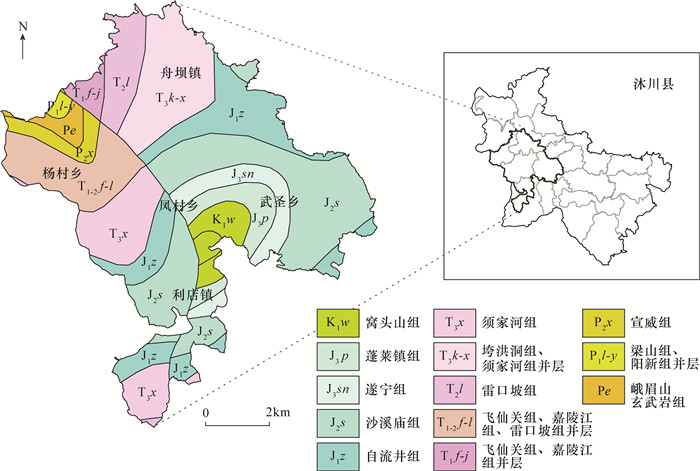
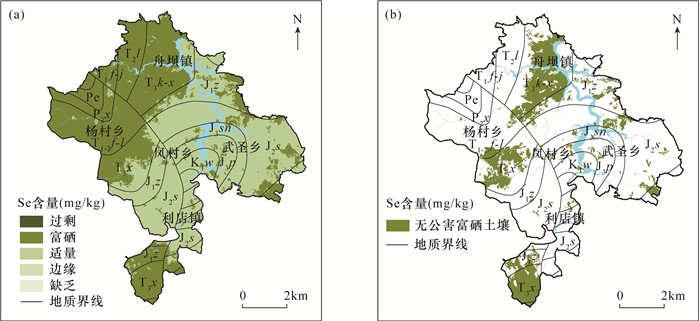
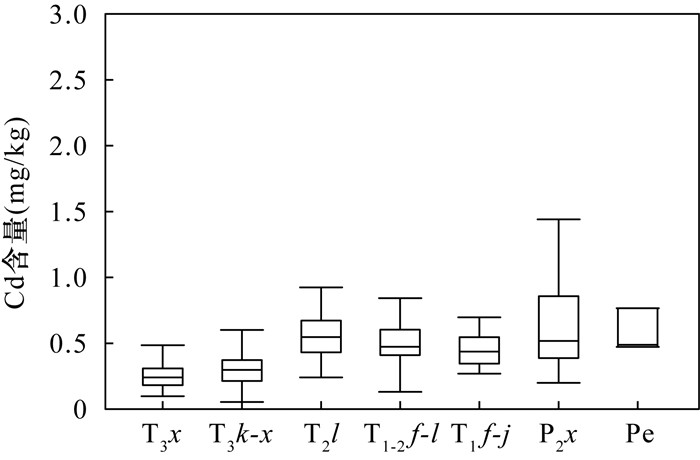
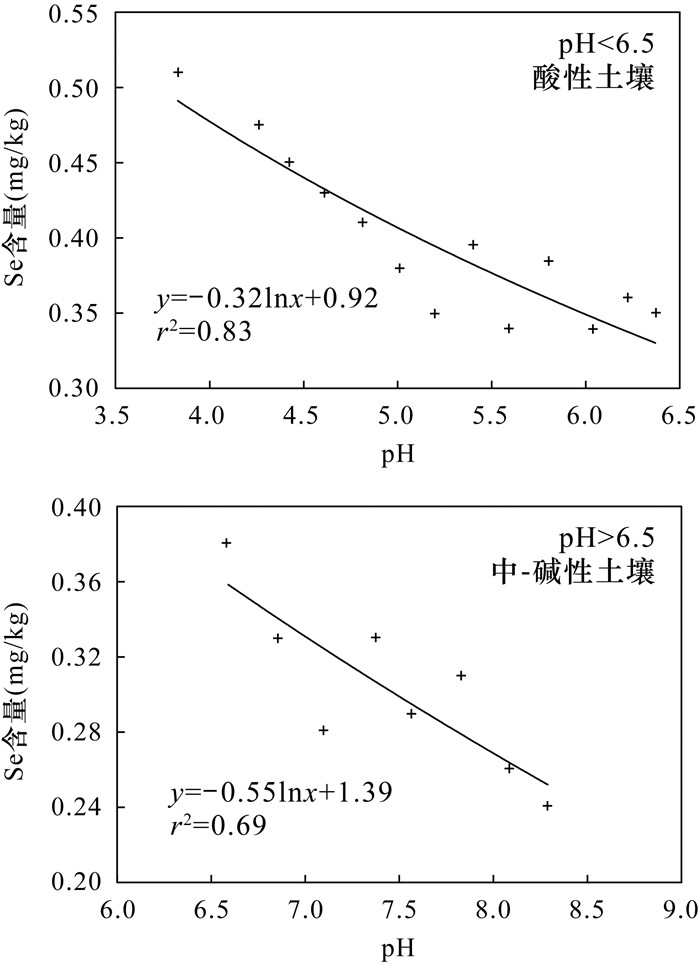
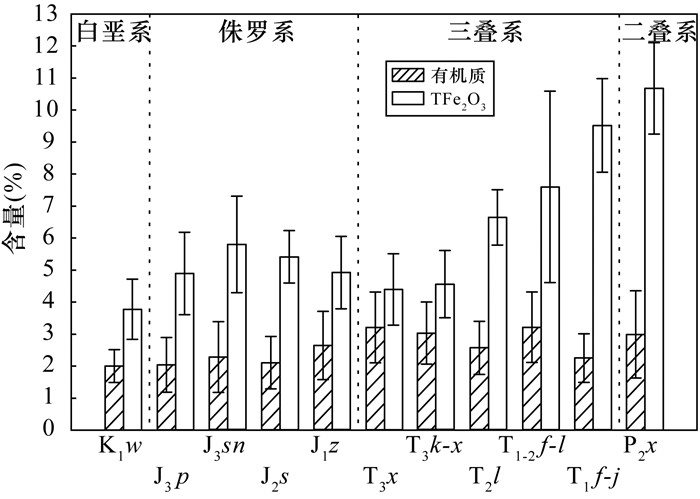
 京公网安备 11010202008159号
京公网安备 11010202008159号